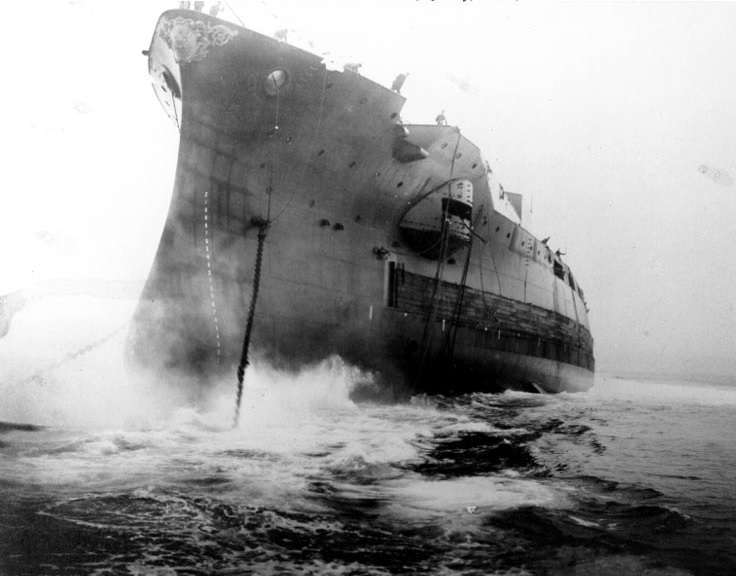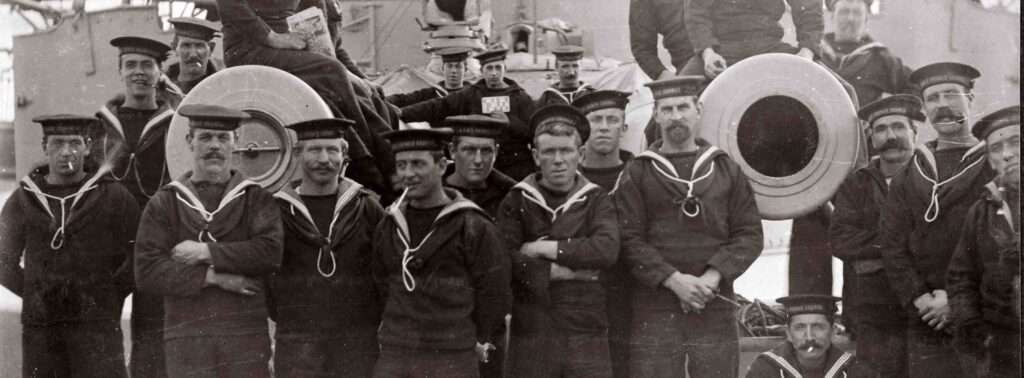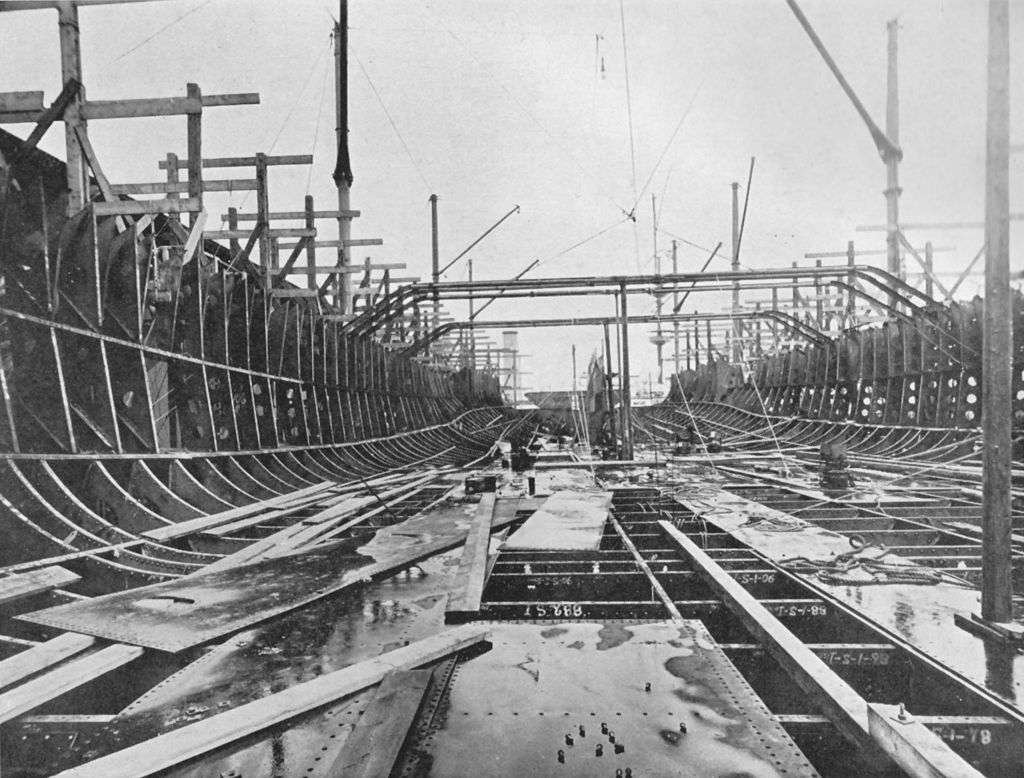The Royal Navy played a pivotal role in shaping Britain’s naval imperial dominance and global maritime power before World War I.

Naval warfare has always had to change to keep up with new technology. Here we explore the transformation of the Royal Navy during the late Victorian era.
We’ll highlight key developments such as the Crimean War, the emergence of ironclad ships, the advent of dreadnoughts, and the introduction of submarines.
Additionally we delve into the transition from sail to steam-powered vessels and examine the daily lives of sailors within this evolving naval landscape.
The Victorian Navy experienced a significant turning point during the Crimean War (1853-1856), where advancements in naval technology and tactics began to shape the future of naval warfare.
The use of steam-powered warships such as the HMS Agamemnon and the HMS Sans Pareil showcased the potential of this new technology.
Steam propulsion allowed for increased manoeuvrability and longer range, providing a tactical advantage on the high seas.
The Rise of Ironclads
The development of ironclad warships marked a major breakthrough in naval construction. These vessels, armoured with iron plates, were virtually impervious to traditional wooden warships.
 The ironclad HMS Warrior was built in 1860. It revolutionised naval warfare.
The ironclad HMS Warrior was built in 1860. It revolutionised naval warfare.
The Royal Navy’s first ironclad, the HMS Warrior, launched in 1860, symbolised the dawn of a new era in naval warfare.
Ironclads combined steam propulsion with heavy armour, transforming the dynamics of naval combat.
The Advent of Dreadnoughts
The launch of HMS Dreadnought in 1906 revolutionised naval design once again. This new class of battleship, characterised by its all-big-gun armament and steam turbine propulsion, rendered all existing battleships obsolete.
Dreadnoughts became a symbol of naval power and represented a substantial leap in naval technology. Britain’s naval supremacy was further solidified as it led the way in the development of these formidable warships.
 HMS Dreadnought. New design meant new skills needed to be learned by her sailors.
HMS Dreadnought. New design meant new skills needed to be learned by her sailors.
The Transition from Sail to Steam
The Victorian era saw the gradual decline of sail-powered vessels and the widespread adoption of steam propulsion.
Steam engines provided consistent and reliable power, reducing dependence on wind and allowing ships to navigate more effectively in adverse conditions.
Read More: The Whale Submarine. A Killer of an Idea
The introduction of diesel engines further enhanced the efficiency and endurance of naval vessels, ensuring their ability to project power across the seas.
Life for Sailors
Life for sailors in the Royal Navy during this period was challenging yet highly regimented.
Sailors lived in cramped conditions, often enduring harsh discipline and long hours of work.
The transition to steam power and ironclad ships brought about changes in the roles and responsibilities of sailors. New machinery required specialised training, and sailors became more skilled in engine maintenance and operation.
The Introduction of Submarines
Submarines, an emerging technology in the late 19th and early 20th centuries, offered a unique and stealth approach to naval warfare. The Royal Navy, recognising their potential, commissioned its first submarine, HMS Holland 1, in 1901.
 Britain’s first Submarine. HMS Holland. It was a far cry from sail and oars.
Britain’s first Submarine. HMS Holland. It was a far cry from sail and oars.
Although still in their infancy, submarines would play an increasingly significant role in World War I, especially in maritime blockade and anti-submarine warfare.
Time for a Change
The Royal Navy underwent a significant transformation before World War I, shaping the future of naval warfare and reinforcing Britain’s status as a dominant global maritime power.
From the Crimean War to the emergence of ironclads and dreadnoughts, the Royal Navy continually adapted to technological advancements. The introduction of submarines further expanded the Navy’s capabilities.
 Life was hard in the Royal Navy. With new ships came bigger guns and bigger dangers.
Life was hard in the Royal Navy. With new ships came bigger guns and bigger dangers.
This period also witnessed the end of sail-powered vessels, with steam propulsion and diesel engines becoming the driving force behind naval power.
Throughout these changes, sailors faced arduous conditions but adapted to the evolving demands of their roles, becoming more specialised and skilled in the operation and maintenance of the new technologies.
While life in the ‘modern’ Navy was undoubtedly challenging, sailors also experienced camaraderie and a sense of purpose.
The strict hierarchical structure ensured discipline and order onboard the ships.
Daily routines included drills, physical training, and regular maintenance tasks to keep the vessels in optimal condition.
Sailors were subjected to strict regulations and codes of conduct, and punishments for infractions could be severe.
However, the Navy also provided opportunities for education and advancement, with sailors able to gain knowledge and skills that could benefit them throughout their careers.
New Routine
Living conditions for sailors were often cramped and uncomfortable. Sleeping quarters were small and shared among several crew members, providing little privacy.
Ventilation and sanitation were limited, and diseases spread quickly in such close quarters.
Food rations were basic, with diets consisting primarily of salted meat, hardtack, and dried beans. Sailors had to endure long periods at sea, sometimes lasting several months, separated from their families and facing the constant challenges of the maritime environment.
 HMS Dreadnought being built. She would be a game changer when completed.
HMS Dreadnought being built. She would be a game changer when completed.
In addition to their demanding work and living conditions, sailors faced the inherent dangers of naval warfare.
The introduction of ironclads and later dreadnoughts brought about a new era of naval combat, with vessels equipped with increasingly powerful armaments.
Sailors were exposed to the risk of enemy fire, explosions, and the potential sinking of their ships.
Naval battles during this period, such as the Battle of Jutland in 1916, showcased the bravery and sacrifice of sailors as they fought for their nation’s interests.
The Royal Navy’s transformation before World War I set the stage for further advancements in naval technology and warfare.
The experiences and lessons learned during this period would shape the future of naval strategies, tactics, and ship designs, ultimately impacting the course of history in the years to come.





